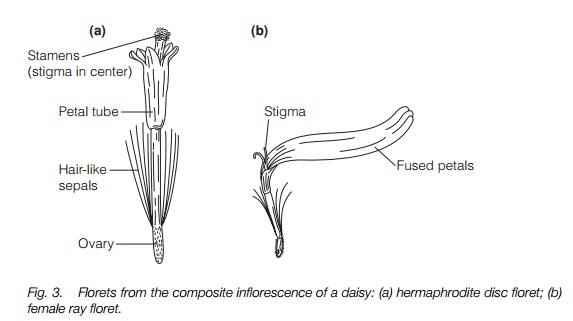Chapter: Plant Biology : Seed plants
Classification and Three families of flowering plants
Classification
Classification of flowering plants is mainly based on the form of the flower, as this is regarded as a conservative character (one that does not change fast in evolution; often a suite of connected characters). Frequently it is correlated with the structure of fruits and vegetative form. Many plant families are defined by the shape and orientation of the flowers, and some large families have remarkably uniform flowers and growth form. Some families, particularly those with primitive features, are more varied but classified together because of a suite of characters, e.g. the buttercup family. Some of the relationships between families are obscure, particularly among those with primitive features.
Flowering plants have long been classified as two main divisions based on morphological characters: dicots, comprising about 70% of angiosperms, and monocots comprising the other 30%. The groupings are largely supported by molecular studies into their relationships, except for the group of families that retain primitive features, comprising about 5% of angiosperm speciesincluding water-lilies, magnolias and Chloranthaceae. These form a disparate group of more or less related families that diverged from the main angiosperm line earlier than the monocot/dicot split. They are now known as primitive dicots
Three families of plants
To illustrate the unifying features that are used to place plants in different families, examples of three large and important families are given.
Daisy family (Asteraceae or Compositae)
The daisy family has over 20 000 species, all with specialized inflorescences of tiny flowers (Fig. 3) each maturing one seed. They are unspecialized in their pollination but many are extremely attractive to bees, butterflies and other flower visitors. Fruits are dry and small and many are effectively dispersed by the wind using a cottony sail. They are mostly herbaceous with very few small trees, perhaps primitive in the family. They are associated particularly with dry regions and many have a deep tap root, but they flourish everywhere.

Grass family (Poaceae or Gramineae)
The grass family has about 9000 species and dominates large areas of the world. Grasses are entirely wind-pollinated except for one or two secondarily adapted to insect pollination. The fruit is one-seeded and dry, dispersed by wind or sticking to animals. All are herbaceous except for the bamboo group which havea most unusual woody form. Growth is not from the stem tip but from nodes on the stem allowing particular tolerance of grazing and fire .
Orchid family (Orchidaceae)
The orchid family has over 25 000 species. Their flowers have three sepals and three petals, one looking different from the others forming a lip. Their pollen is dispersed in aggregations (pollinia), and many species are adapted to one or a few insect species, usually bees. Many provide unusual food rewards such as oil or scent, or no food reward, deceiving their pollinators. The fruit is a pod with huge numbers of microscopic seeds deriving from one or few pollinations. All are herbaceous with specialist mycorrhizal infection in their roots and many are epiphytic .
Related Topics